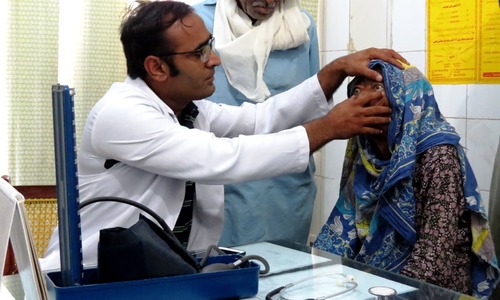LAHORE: The Punjab’s domestic and external debt stock remained at Rs956.4 billion in total as of June 2021 that includes a major chunk of Rs951.2 billion loans obtained from international funding institutions.
The World Bank Group (International bank for reconstruction and development-IBRD and International development association-IDAD) is the leading creditor with 46 percent share followed by the Asian Development Bank, China and Japan with 25 percent, 24 percent and 3 percent shares respectively in the external debt stock, according to the budget document.
The total debt stock, including Rs5.2 billion as domestic debt, has declined from Rs997.7 billion (as of June 2020) to 956.4 — by 4 percent (Rs41.3 billion) - primarily due to rupee appreciation against foreign currencies.
According to the 2021-22 fiscal year’s budget document (white paper), the Punjab government will pay Rs62.87 billion in debt servicing that refers to the amount of annual payments on account of principal amount and interest. The ratio of debt service to revenue is a measure to assess the risk of debt distress. Lower ratio demonstrates debtor’s ability to service debt without distress.
Punjab’s ratio of debt service to average revenue is 4.1 percent for the FY 2021-22 that is quite low and indicates low risk. The province’s debt servicing for the FY 2021-22 is marginal when compared to the size of average annual revenues of the last three years is 3.9 percent, indicating it a self-sufficient to honour its obligations on account of debt servicing.
The province’s domestic debt consists of cash development loans (CDL’s) obtained from the federal government. These are agriculture programme loans at fixed interest rates with original maturity of 25 years. Many of these loans have already been repaid and the outstanding amount of CDLs as of June 21 is estimated at Rs5.2 billion that will be repaid fully by FY 2030.
The external debt of the province is concessional in nature with an average borrowing rate of 1.41 percent per annum and average maturity of 8.8 years as of June 21.
The total foreign creditors included IDA and IBRD (World Back Group) that provided Rs307.4 billion and Rs130.5 billion to Punjab, followed by the ADB with Rs240.1 billion and the Chinese Government with Rs230.7 billion. The Islamic Development Bank gave Rs0.1 billion, the French government Rs3.8 billion, the International Fund for Agricultural Development Rs12.2 billion and the Japan International Cooperation Agency Rs26 billion.
The Agriculture & Livestock leads as the major debtor of the foreign creditors as its share has been recorded as 28 percent in the total external debt. It is followed by the transport and communications sector with 24 percent share, education (22 percent), urban & community Development (12 percent), governance (6 percent), healthcare (5 percent), industries and infrastructure (two percent), and energy and environment (0.2 percent each). The redemption profile of the principal amount refers to the projections of repayments planned by the government for next 14 years. Under this, the government projects repayment of the principal amount (external debt).
The schedule mentions Rs47.47 billion repayment in the FY 2021-22, Rs47.63 billion in 2022-23, Rs63.50 billion in 2023-24, Rs61.13 billion in 2024-25, Rs61.27 billion in 2025-26, Rs61.16 billion in 2026-27, Rs63.17 billion in 2027-28, Rs61.91 billion in 2028-29, Rs63.29 billion in 2029-30, Rs64.40 billion in 2030-31, Rs59.82 billion in 2031-32, Rs56.70 billion in 2032-33, Rs56.56 billion in 2033-34 and Rs51.85 billion in 2034-35.
The government while anylising the risk of Punjab debt profile says that the debt maturing and average time to maturity (ATM) are the two indicators used to measure the refinancing / rollover risk.
Published in Dawn, June 15th, 2021

















































